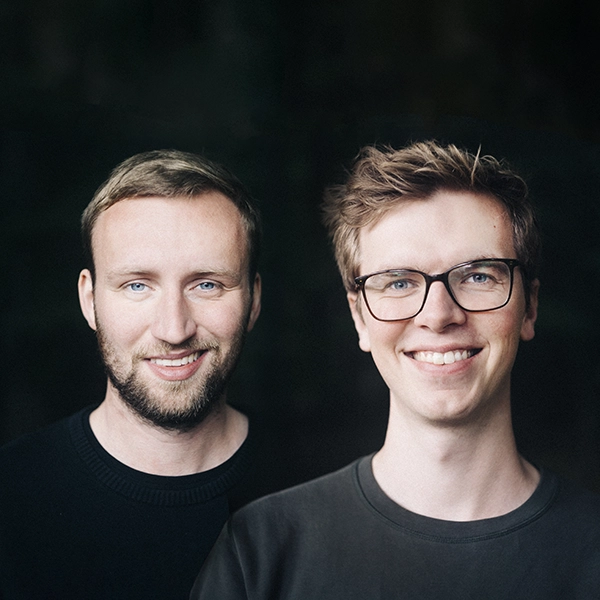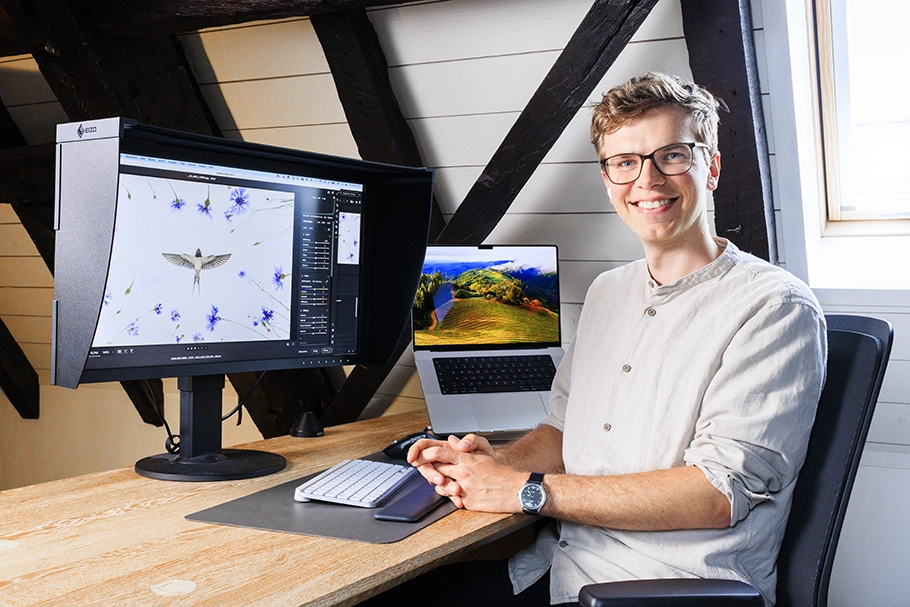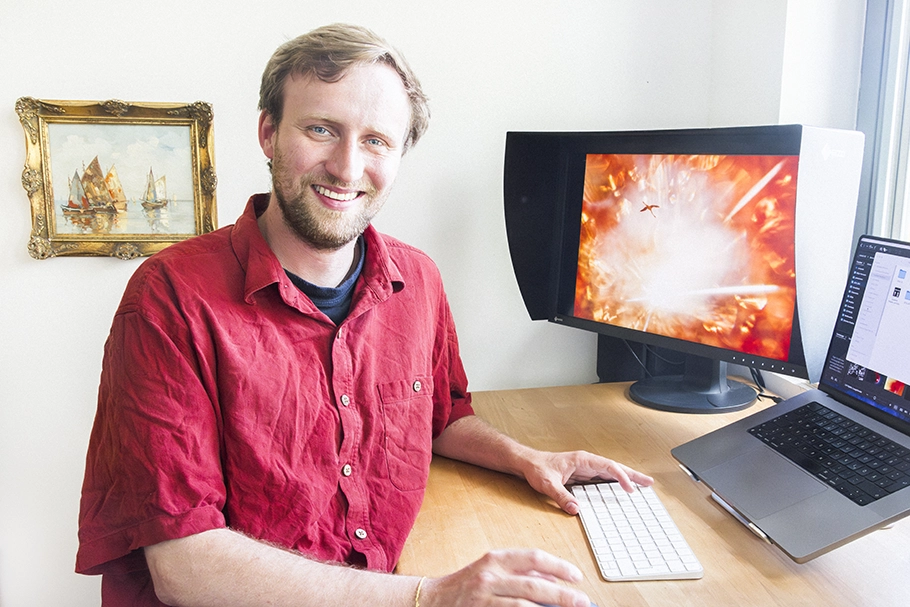Case Studies
Zeitweise - Serendipity and Recognizing the Special in the Ordinary | EIZO
Jan Lessmann and Hermann Hirsch are more than just excellent nature photographers, whose often abstract photos regularly take top places in renowned photo competitions. With their company “Zeitweise,” they also offer exciting online and in-person workshops, as well as run a YouTube channel and podcast.
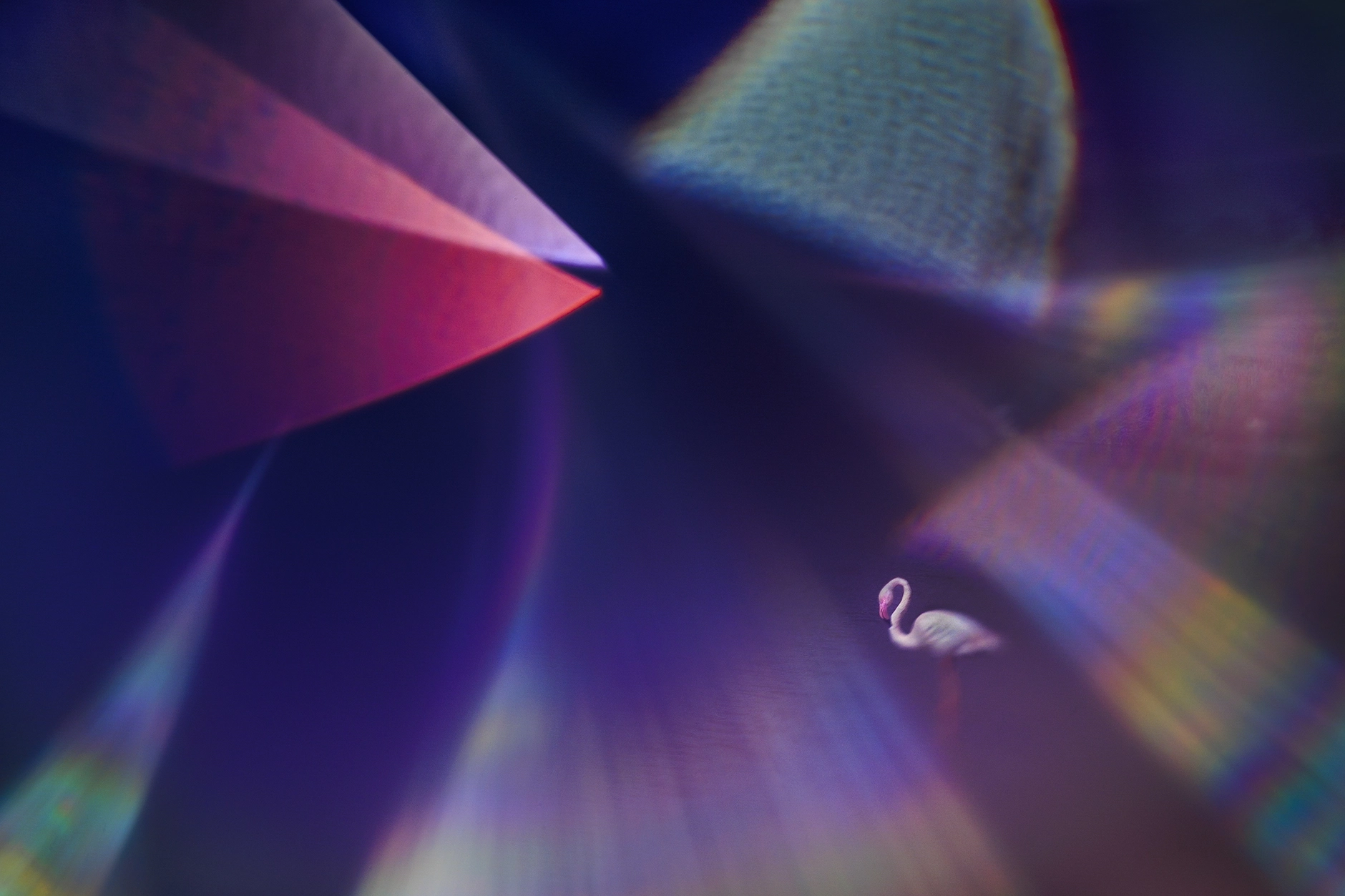
|
Lessmann and Hirsch share both the same year (1993) and place (Ruhr region) of birth. The pair have also equally developed a great love of nature and photography. However, their paths only crossed in 2018. Hirsch had booked accommodation that was too large and expensive for a solo photo trip to the Scottish Highlands. So, while looking for other fellow travelers, he ended up asking Lessmann, whom he had previously only known distantly from the German Society for Nature Photography – GDT (Gesellschaft für Naturfotografie e.V.). Lessmann went along and, from this trip and numerous other ventures, a close friendship developed which ultimately led to the joint company “Zeitweise” in 2021. |
|
Interview with Jan & Hermann
We spoke to Jan Lessmann (JL) and Hermann Hirsch (HH) about teamwork, visual language, and their approach to nature photography. In this interview, the two nature photographers from Germany also provide insight into their image processing setup and explain their choice of monitor.
Shortly after you wanted to really hit the ground running with “Zeitweise”, the pandemic threw a wrench in the works for most of your plans. How did you deal with it?
JL: We developed online workshops. They not only worked very well during the pandemic but are still very popular today and have become a permanent part of our offering alongside our in-person workshops and trips.
What makes a good nature photographer for you?
JL: You have to be a bit crazy. Nature photography is often frustrating because there are many factors that are out of your control. You have to be patient and persistent. Curiosity is helpful, and you need a trained eye for situations and motifs.
HH: Knowledge is also important. On one hand, you have to know about photographic technique and, on the other, about what you are photographing. You don’t have to know the Latin names of the animals you want to photograph, for example, but knowing where to find them and when, and how they behave, greatly increases your chances of success. Ideally, you should also develop a visual language.
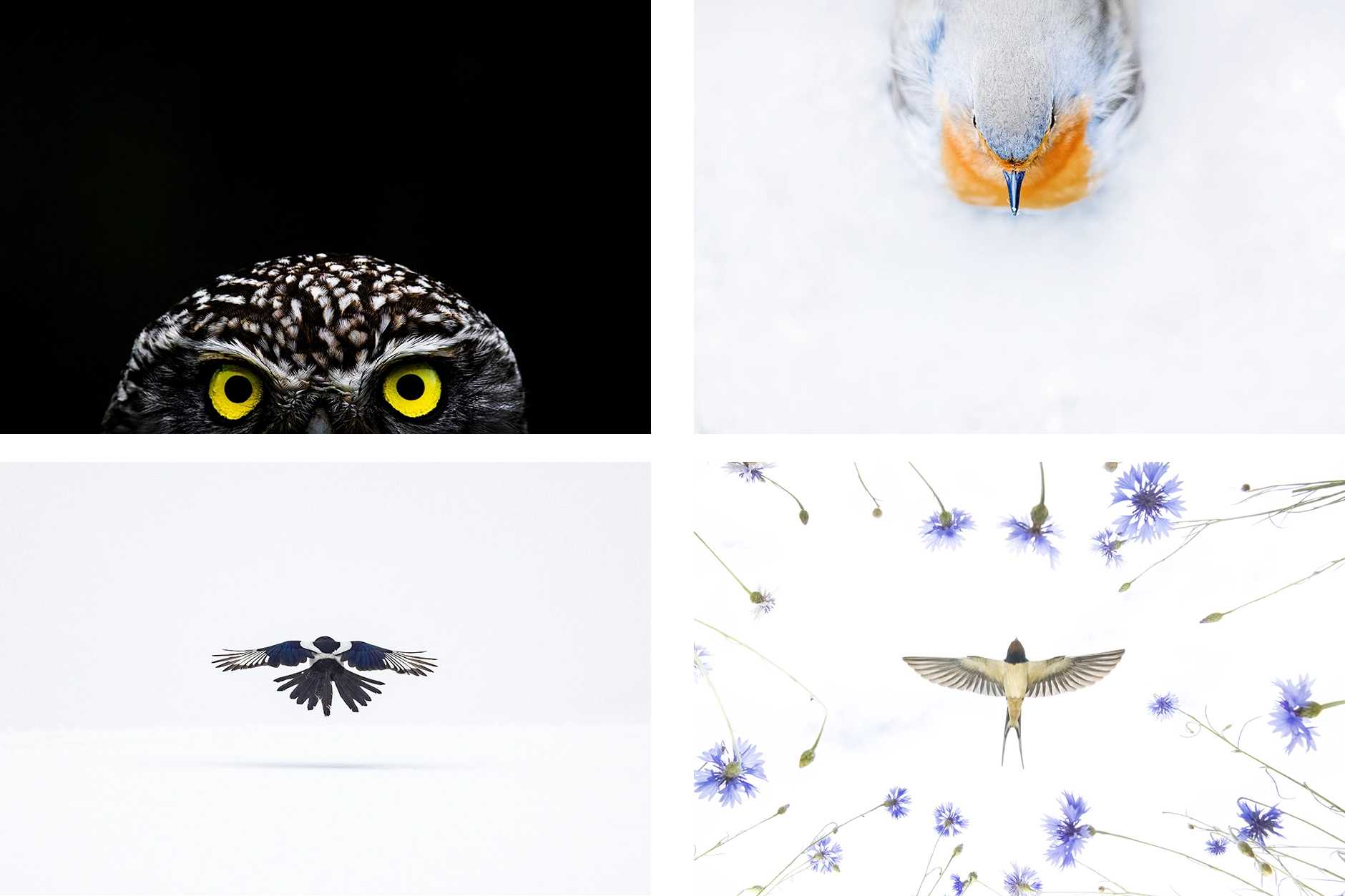
What makes your photography special?
JL: The term “serendipity” describes it best. We try to make use of “serendipity.” Specifically, we try not to stick tenaciously to a fixed plan or get frustrated if the project cannot be implemented 1:1. Our basic attitude is rather “what can we do today that we can’t do on any other day” and then turn it into a great picture. In this way, we always try to recognize the special in the ordinary.
Your photos inspire with their unusual angles and abstract realizations. How do you come up with that?
JL: It’s the result of a lot of trial and error, practicing, and remaining open to new things. If you’ve been looking at the big picture for a long time, your eye for detail and the abstract sharpens over time. Then it’s no longer about capturing a particular animal as perfectly as possible, but rather about experiencing things in nature and creating creative images in these situations. It is no longer about pure documentation. Nature provides the framework for creative artistic expression.

What are your limits?
HH: For us, the experience of nature is always in the foreground. Our pictures are always taken on location, just as we show them.
JL: However, that doesn’t stop us from taking objects to photograph on location, through which we create alienating effects. This can be a steel sponge, a prism, or even a cheese grater, for example.
What role does technology play in your work?
JL: Nature photography often requires a lot of equipment such as fast cameras, long focal lengths, remote triggers, and light barriers. We are very demanding in that respect. The equipment simply has to be really good and work. The technology, however, is only ever a basic requirement for strong images.
HH: You also have to master your technique. In animal photography in particular, you often have to react within fractions of a second to capture an extremely fleeting and fast-moving situation. That simply requires practice.
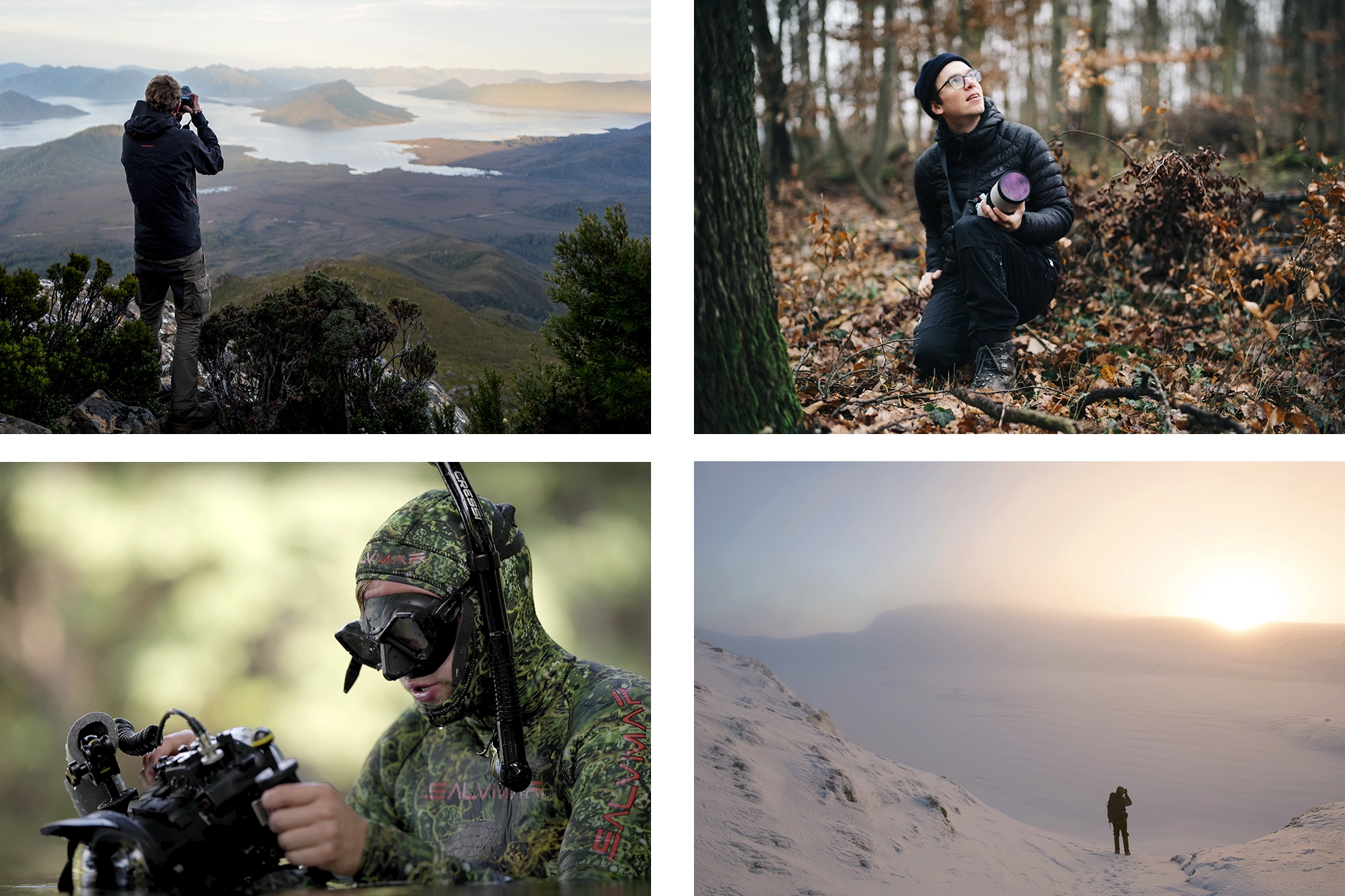
Now “Zeitweise” appears as a company, but you also submit pictures to competitions together as “Zeitweise”. That’s unusual, isn’t it?
HH: It may seem unusual, but it’s only logical. When we work together on themes or image ideas, we do it as a team and deliberately don’t do the same thing. We split up, use different focal lengths, different angles, or go to different locations, for example. What counts here is the end result and not who happened to have the more suitable focal length, the more ideal angle, or simply the more luck.
JL: And with complex setups with light barriers or remote-controlled cameras, it’s often not possible for us to say which of us took the photo anyway. These are then “Zeitweise” photos.
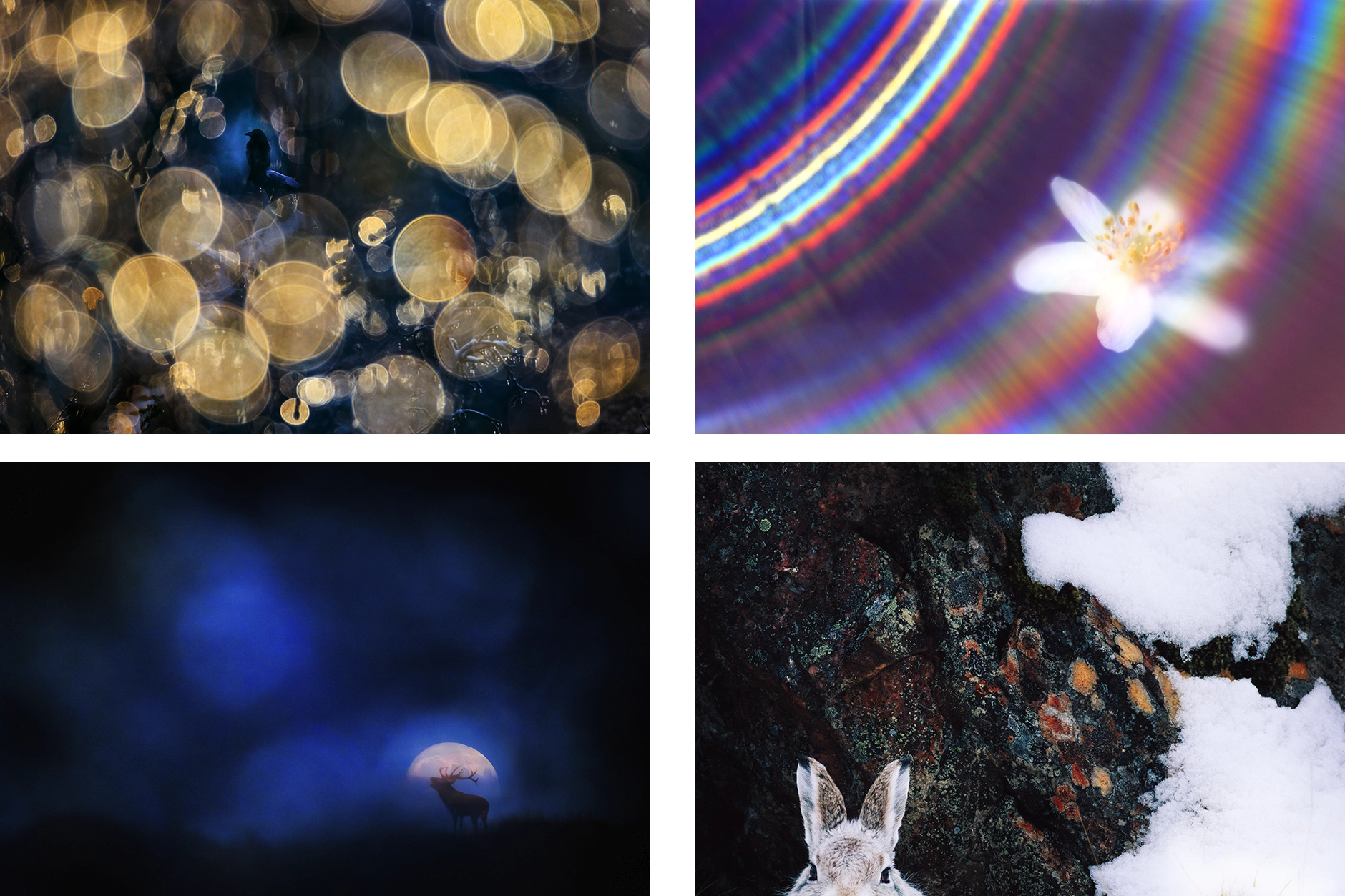
What significance does digital image processing have for you?
JL: We optimize our pictures to bring out our artistic expression more clearly. Basically, we follow the GDT competition rules and don’t remove anything from the image, apart from sensor dirt, or add anything that wasn’t actually there.
What does your image processing setup look like?
HH: Mobile computers are now so powerful that we do everything with our MacBook Pros. At home, our MacBooks are then connected to ColorEdge monitors from EIZO.
|
|
|
What importance do your monitors have for your image editing workflow?
JL: Unfortunately, many photographers don’t think about their monitors. I also want to spend as little time as possible on the monitor so that I can concentrate fully on my pictures. But to do this, I need to be certain that my monitor is displaying an absolutely precise image of my image files. Unfortunately, the vast majority of monitors do not achieve this. Most monitors are technically incapable of displaying photos in the required color space, and even if they were, the display is often so imprecise that they are not suitable for sophisticated image editing.
Which monitors are you currently using and why did you choose them of all things?
JL: I use the ColorEdge CG2700X and Hermann uses the CS2740. As I said, we are quite demanding when it comes to our technology, so that’s where we end up relatively directly with EIZO. We both use a 27-inch monitor and appreciate the wide color space, the excellent homogeneity, and the sharpness of the 4K resolution, as well as EIZO’s excellent factory calibration that ensures absolutely precise image display and fast recalibration. My CG2700X can even calibrate itself! That’s incredibly convenient.
HH: It’s also just super practical that we can connect our MacBooks to the monitors via USB Type-C with a flick of the wrist, through which they can also be charged and connected to peripheral devices connected to the monitor.
What’s next for you?
JL: We are working on expanding our range of workshops. We’re really looking forward to scouting new destinations and adding more instructors to the “Zeitweise” team. We also want to further expand our YouTube channel and our recently launched video podcast.
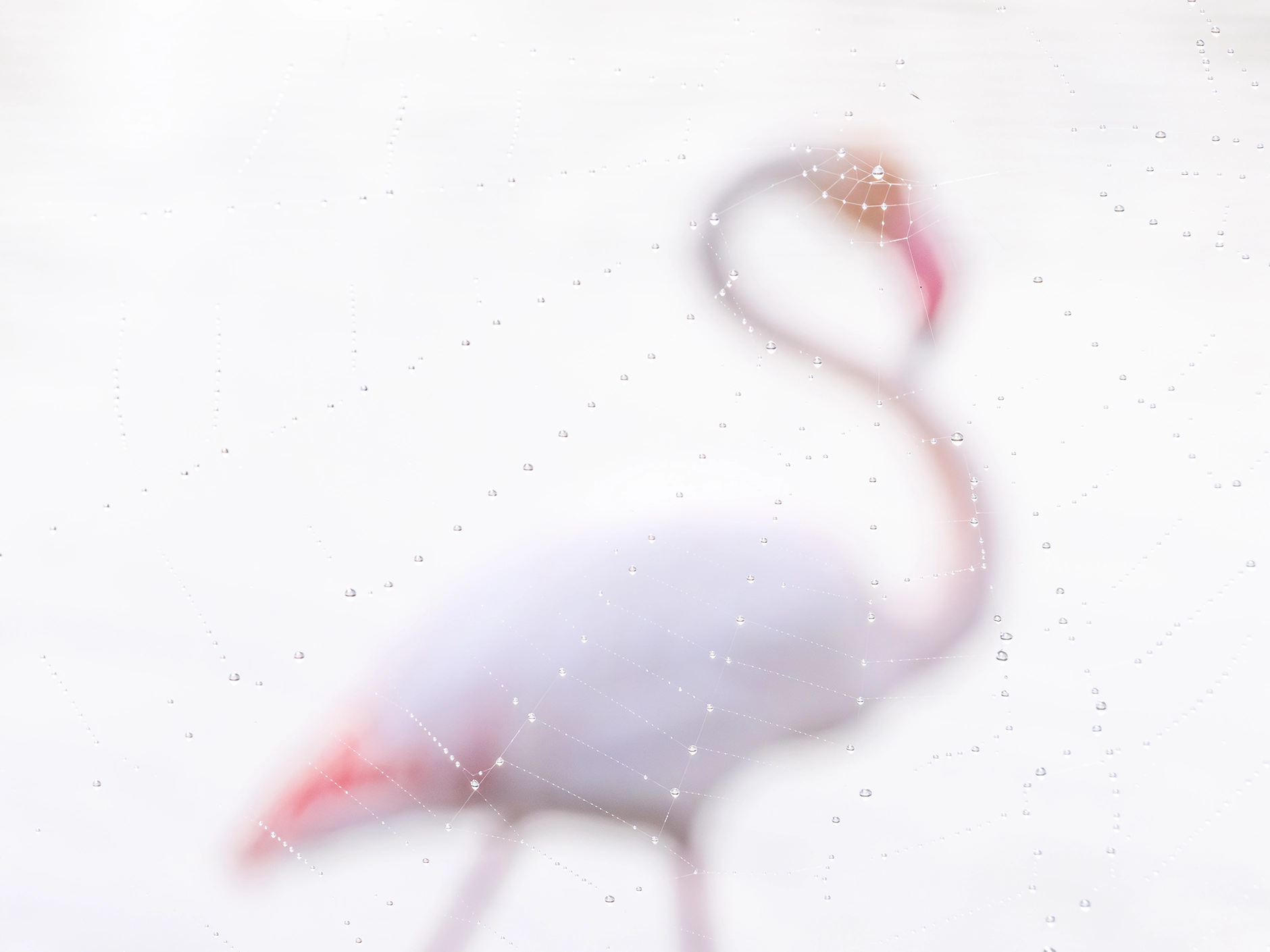
Special thanks:
Zeitweise
Website (German)
Instagram
Deployed Products

